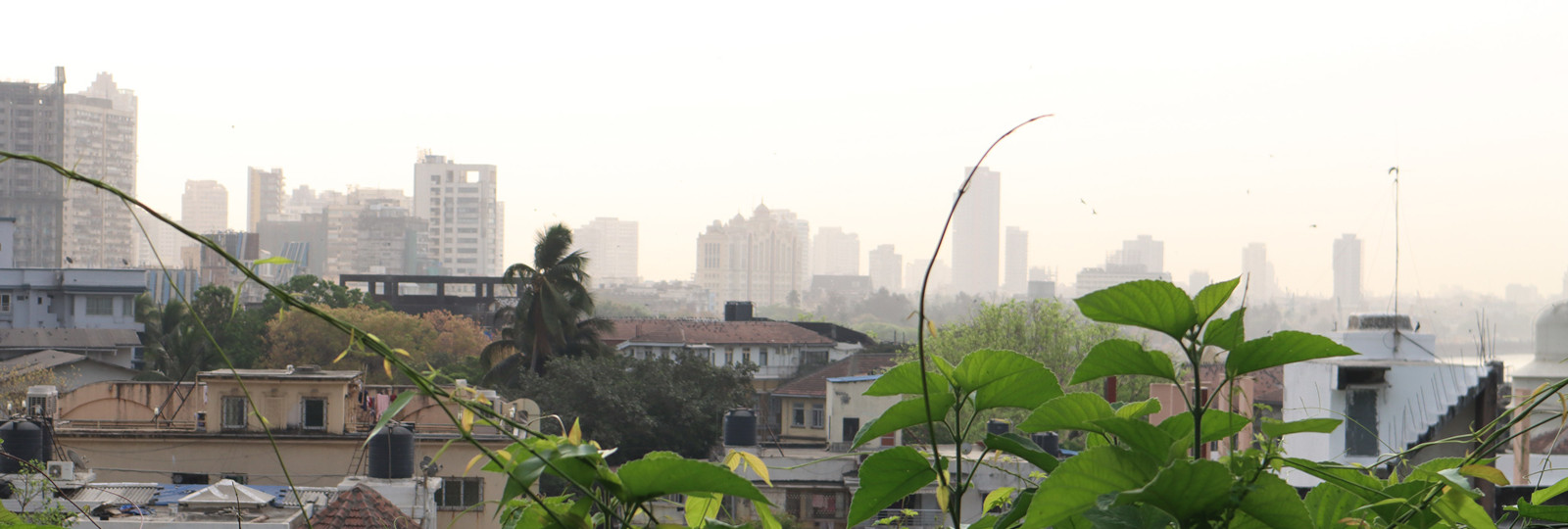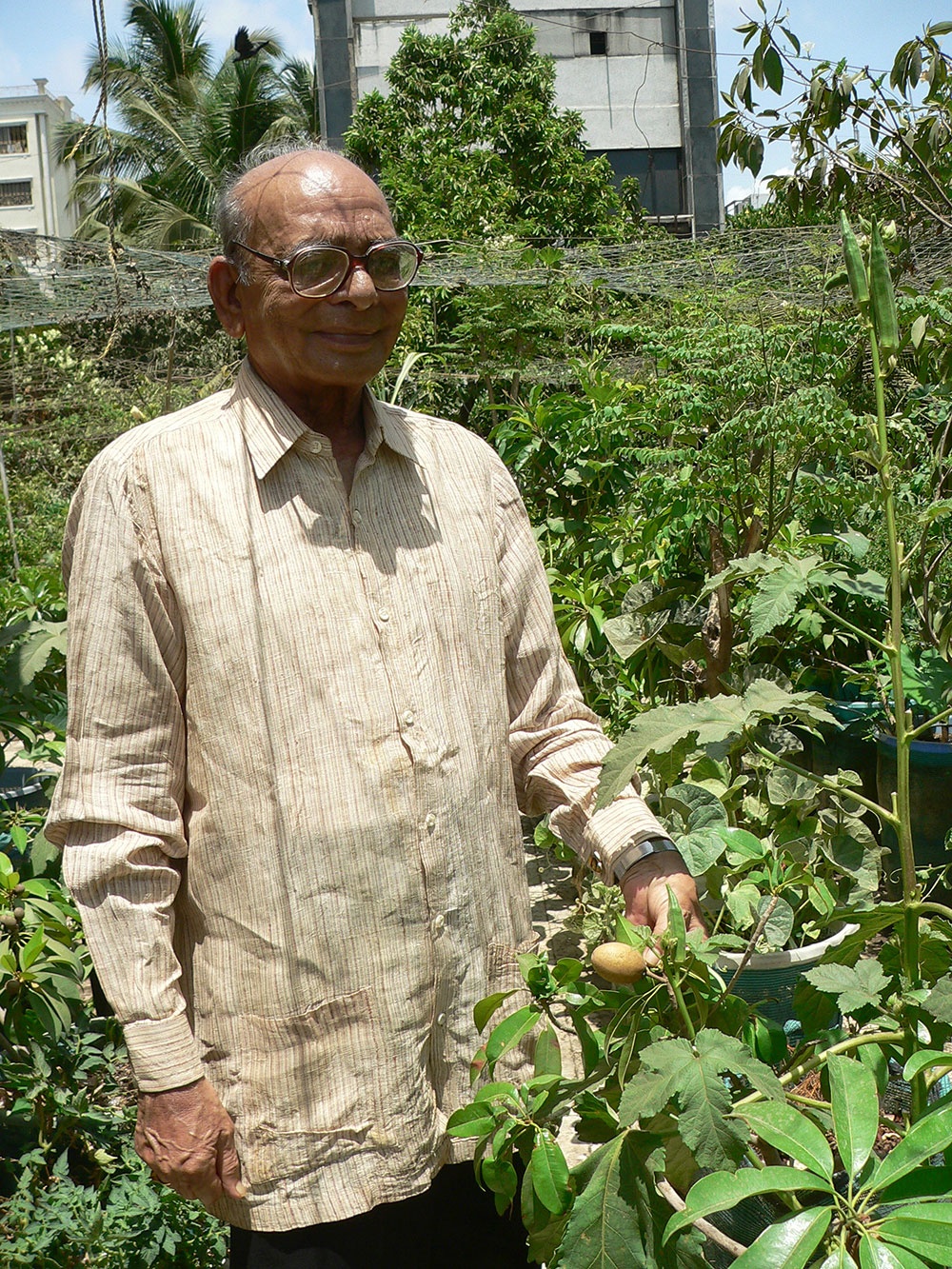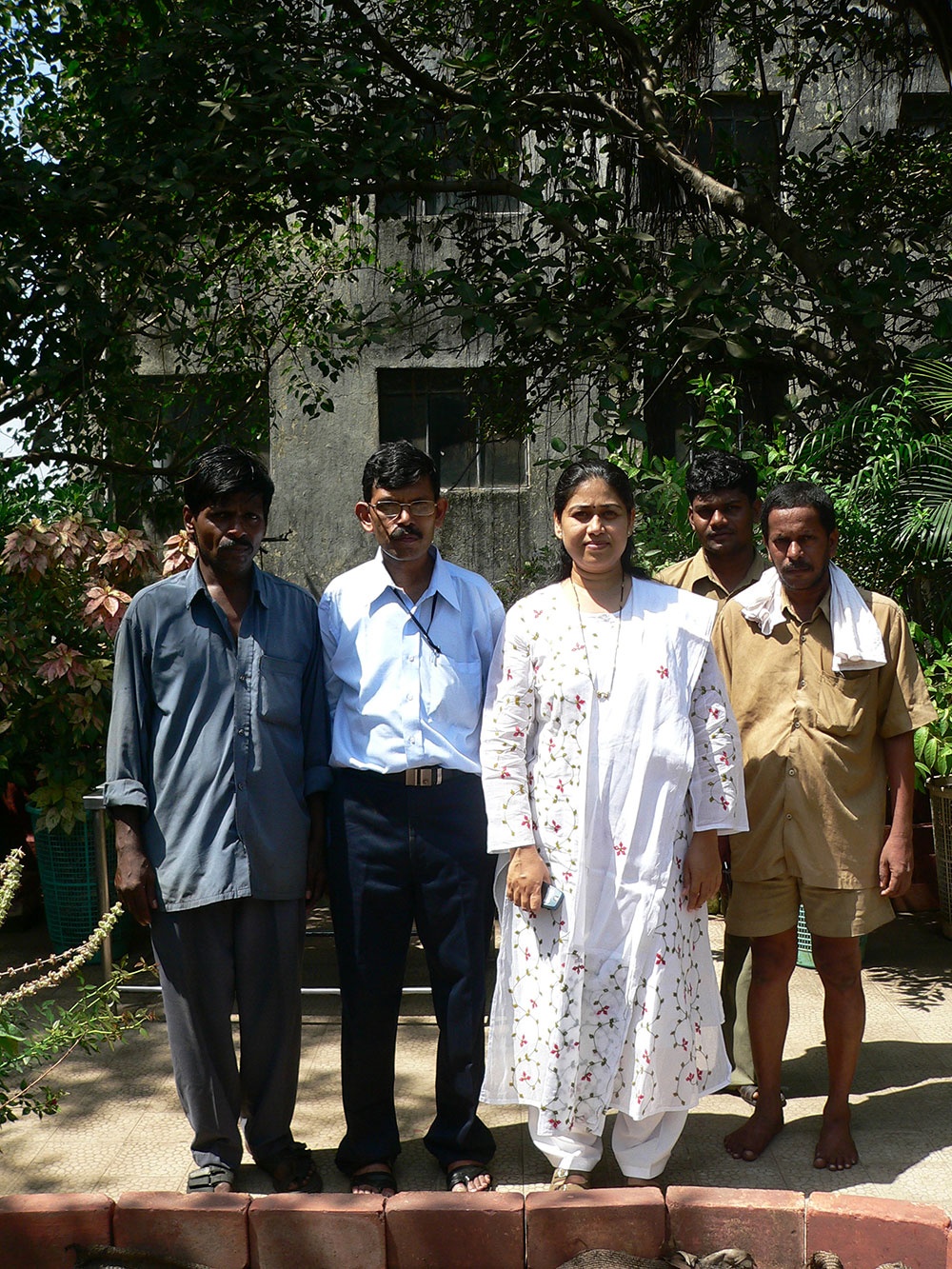
City Farming Gurus in Mumbai
Karen Menezes on January 28, 2013If you’ve ever played with wet earth, and watched a tiny seed emerge to touch the sky, you have connected with the feeling of growing your own food – just as our forefathers had, over the last 12,000 years. This ever-evolving process of careful, selective farming has given us the seedless grapes and large-grained cereal that we eat today.
Even as you read this article, our country is losing fertile soil to deforestation, urbanisation and excessive pesticide use. The transport of food from fertile lands to our concrete jungles produced 19 million tonnes of carbon dioxide in 2002.1 Grapes from Nashik coexist with kiwi fruit from New Zealand in our supermarkets.
Have we forgotten the aroma of luscious fruit plucked minutes ago from a neighbouring tree?
City farming is a growing movement across the world to grow food in any available urban space, including terraces. It can greatly reduce the burden of kitchen waste through compost. Greater Mumbai generates about 6000 tonnes of garbage per day, of which only 3-4% is composted. 2 As our landfills choke with filth, one wonders, “Why not compost biodegradable garbage at a local level, rather than burdening the civic system?”
Today, nearly half the world’s population lives in urban areas, and by 2030, it is estimated that this figure will rise to over 60%.3
How will we feed an expanding urban population?
Can food only be grown in rural areas?
Can urban agriculture save monthly expenditure on food items?
Cities across the world are meeting the challenge of growing their own food.
Latin American countries like Peru and Venezuela are feeding millions with food grown on rooftops, schoolyards, and in office buildings.4 In 1999, organic urban agriculture produced 65 percent of Cuba's rice and 46 percent of its vegetables.5
In Mumbai, a few farming gurus are paving the way for other city farmers to follow suit.
DR. R. T. DOSHI: MUMBAI’S ORGANIC CITY FARMING GURU
Winner of the Padmashri Award in 1970 for his contribution to Indian agriculture, Dr. Doshi, a city bred economist, has experimented over the years to create a model city farming system.
His equation appeals to urban dwellers because:
Minimum (capital and operational costs + labour + water) = Maximum output
Dr. Doshi’s 1200 sq ft farm yields an average of 5 kg of produce per day, with a labour input of hardly half an hour per day, and the use of cheap, easily available resources like sugarcane bagasse and minimal soil.
The procedure involves the following:
Containers
High-density polyethylene bags (used to store flour/cement).
Cut off the bottom of the bag completely.
OR
Large laundry buckets
Soil and biomass
Starting from the bottom, pack the container with:
a) 75% of available material (sugarcane waste or rice straw).
b) 10-15% of decomposed garbage.
(Use a mixture of organic, uncooked waste kept in a closed polyethylene bag and moistened daily for eight days)
c) 10% of good, rich soil.
Seeds
Plant seeds 3/4th inch below the soil.
Occasionally, add uncooked kitchen waste to nourish the soil.
What about seepages caused by watering plants?
Sunil Doshi, his son, says that cracks on terraces are formed with expansion of building materials in summer and contraction in winter. But terrace farms stabilise outdoor temperatures, reducing the possibility of cracks, and therefore seepage. City farms are natural cooling systems for buildings.
Following this technique, Dr. Doshi has been growing organic food over the last couple of decades, thus saving about 2000 rupees per month on perishables. Visitors are amazed by the simplicity of the process. For vines bearing pumpkins and gourds, he has fixed a net above on which the plants trail.
As Dr. Doshi says, ‘With a few human inputs, nature takes care of everything.’

PREETI PATIL: 300 PLANT VARIETIES ON A 3000 SQ FT TERRACE FARM
What do you do when you realise that your kitchen generates almost 20 kgs of biodegradable waste daily?
Preeti Patil, Catering Officer at Mumbai Port Trust (MbPT), figured a way to manage the wet waste of the central kitchen, MbPT.
Preeti follows the science of ‘Natueco Farming’ pioneered by the late Shripad Dabholkar that promises outstanding yields through scientific techniques. Using sugarcane bagasse, composted kitchen and garden waste, and oil drums, the employees of MbPT tend to about 150 varieties of plants, including fruit trees.
Kitchen waste is pulverised to deter rats from nibbling on chunks. Compost is made with the extremely nutritious amrit pani to ensure optimum soil nutrition. Leaves are soaked in this concoction of fresh cow dung (for its high microbial count), cow urine, black jaggery and water.
‘Treat the soil, and not the plant’, is the pest management philosophy. A plant attacked by pests lacks nutrients due to poor soil, and is therefore, vulnerable to attack.
This award winning city farm is thriving today thanks to the support from her staff, seniors, and the Head of the Labour Department.
A large number of birds and butterflies now visit the terrace. Some weeks ago, Preeti witnessed a tailorbird sewing a nest of leaves on a mussaenda plant. Even as they provide a living shelter to wildlife, terrace gardens connect us to the natural beauty that they represent in our cities.

BANANAS BLOSSOM IN BATH TUBS!
Dilip Vishwanathan, an avant-garde gardener and the Additional Chief Mechanical Engineer of the Mumbai Port, has developed a picturesque garden on his own in his residence at Colaba. Also credited with turning around the fortunes of the Port in the last couple of years, he has converted a dumping ground for nearby shops into a thriving garden with lush palms, flowering creepers, and edible colocasia leaves. Dilip recycles any available container to grow plants. He has utilised several colonial era bathtubs to rear tropical aquarium fish and grow water lilies.
Due to a rat menace in the garden, the roots and stems of banana plants were being chomped on a regular basis. Dilip found the solution in cultivating banana plants within bathtubs, since the rodents are unable to bore through them or jump over the curved rims.
He uses the ‘top-down’ watering method, where water from plant containers on a higher level drips down to the plants below, eliminating the need to water them.
As we move down the quaint brick pathway, we come across the highlight of Dilip’s handmade garden; a Kitchen Wastewater Recycling System that he has engineered.
Complaints from neighbours about wasting potable BMC water led to the creation of this incredible device made entirely from scrap material. About 200 litres of kitchen waste water is filtered per day and diverted to a network of pipes to water the entire garden. Needless to say, the nutrient rich water nourishes the plants, and the bai is requested to use less detergent (and more of lime rinds and ash cakes) to maintain the water’s quality!

So, do you want to be a city farmer?
1) Don’t have a pot?
Use any available container. Dilip Vishwanathan uses 5 litre cooking oil cans cut in half. Using old plastic buckets and tyres helps to recycle the waste generated in cities.
If you don’t have much space for pots, obtain hanging wire baskets from a nursery.
Read about container gardens here
2) Too lazy to compost?
Some gardeners directly dump vegetable and fruit peels onto the soil of potted plants. They will compost naturally. Avoid cooked waste and non-vegetarian remains.
This page has a lovely video on how simple composting can be.
You can check out daily dump that sells a whole bunch of composting containers and paraphernalia.
3) No seeds available?
Grow plants from groundnuts and cereal seeds. A window sill can hold mint, curry leaf and coriander plants. Collect seeds of rare, local varieties when you visit your native place. Obtain the rest from nurseries and seed merchants. Here’s a lovely article on starting a garden from seeds in your kitchen cupboard!
4) Will any soil do?
A mixture of red earth soil, river sand (for drainage), compost and semi-dried cowdung assures the growth of a healthy plant. I pick up potting soil from Ratanshi Nursery, near Rani Bagh, Byculla, that is a combination of red earth, compost and cowdung. I mix some cocopeat into this and have realised that mostly anything will grow in this medium.
5) Pesky pests?
A healthy soil and intercropping keeps away pests. Grow garlic and marigold between plants to deter bugs. Check out ‘control methods’ on www.oisat.org to learn how to make natural pesticides.
Books on City Farming
1) City Farming
R.T. Doshi
2) Plenty for All - Prayog Parivar Methodology
Shripad A. Dabholkar
3) Plants in Pest Control: Garlic and Onion
By K. Vijayalakshmi, B. Subhashini and Shivani Koul
4) The Natural Way of Farming: The Theory and Practice of Green Philosophy
By Masanobu Fukuoka
(The above books can be ordered from Other India Bookstore and are available in their Organic Farming Agriculture section.)
Websites on Urban Agriculture
1) www.urbanleaves.org - Great resource for city farming. I volunteered for some months at a city farm they were taking care of at Nana Nani Park, opposite Wilson College, Chowpatty. They're really amazing.
2) geekgardener.in - Cool software guy from Bangalore who writes meticulously about growing cool veggies and fruit from seed
3) www.cityfarmer.info - One of the most renowned online spaces for city farming news and updates
4. www.robinsonloveplants.com - Amelia Robinson's in-depth composting guide
Guide to set up a City Farm here
References
1) ‘The Validity of Food Miles as an Indicator of Sustainable Development,’ July 2005, final report, study by AEA Technology Environment commissioned by Defra (Department for Environment, Food and Rural Affairs)
2) www.mcgm.gov.in
3) www.unep.org
4) www.cityfarmer.org
5) Organic Farming Feeds A Nation, Renee Kjartan, Washington Free Press, July/August 2000
This is a really long article I wrote in 2006, that was abridged and used by Sunday Mid-day. I've updated the links and published it here. Hopefully, it will be of value to some of you...
Credits
Images by Karen Menezes. All Rights Reserved.